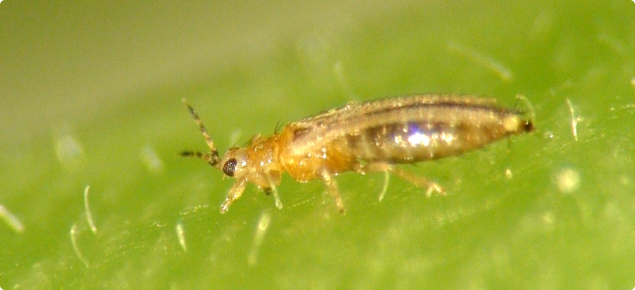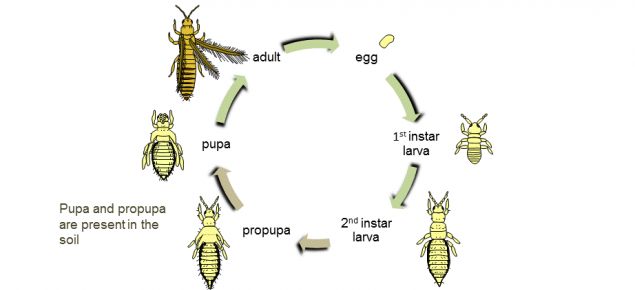Thrips usually feed in strawberry flowers although they may also feed on leaves and fruit. Damage to flowers is characterised by brown and withered stigma and anthers, slight dead (necrotic) spots on the calyx of the flower and reduction in flower receptacle size at high density (more than 25 thrips per flower).
Larval and adult feeding on the fruit surface causes net-like russetting, which reduces shelf-life and fruit appearance. Thrips feeding on pink fruits causes bronzing.
On older fruit, adult and larval feeding causes russetting around the seed (achene). A symptom called cat-facing can also occur due to thrips feeding, though cat-facing may also be caused by poor pollination during cool conditions.
Thrips biology and identification
All species have a similar life cycle with five stages – egg, nymph, prepupa, pupa and adult. The adults have two pairs of wings that are often folded back over the body, while larval stages do not have wings. The prepupa and pupa are present on plant material or soil.
Two major pest species occur in strawberries – plague and western flower thrips.
- Plague thrips are native to Australia. The female is light brown to yellow, 1.1-1.3mm long, with light brown legs. Males are smaller (0.8-1.0mm) and yellow.
- Western flower thrips are larger. Females are 1.4-1.8mm in length, males 0.9-1.1mm. Both are light brown, though the female has a black tip on the abdomen.
Thrips are most active in the spring and are found in strawberries at this time, especially once surrounding weeds have dried off. In the extreme conditions of summer and winter, thrips are less active and are usually found on alternative hosts such as weeds. Thrips activity may also be seen in autumn when mild conditions return. Western flower thrips populations tend to peak in spring (mid to late October) and autumn (March to May).



